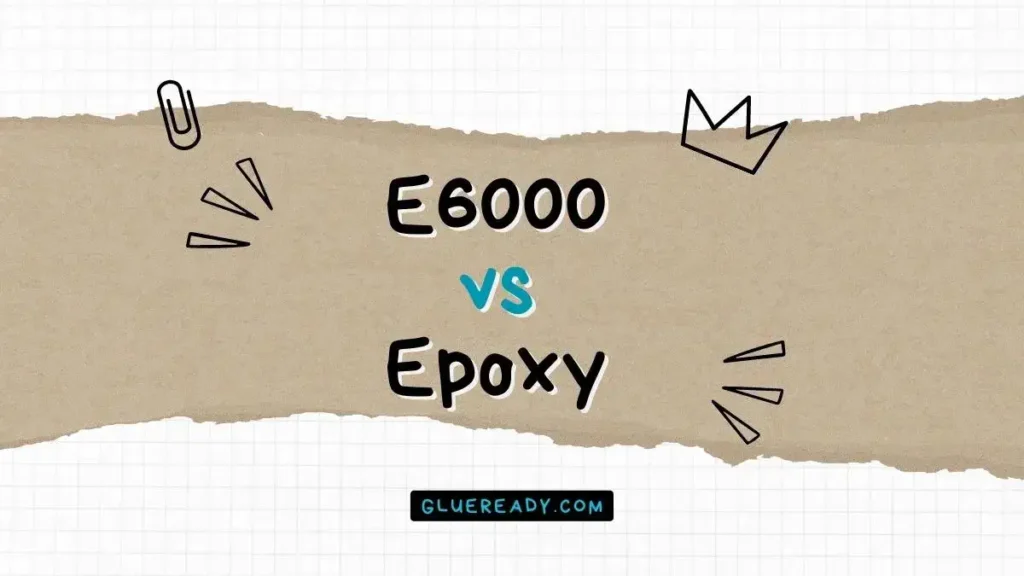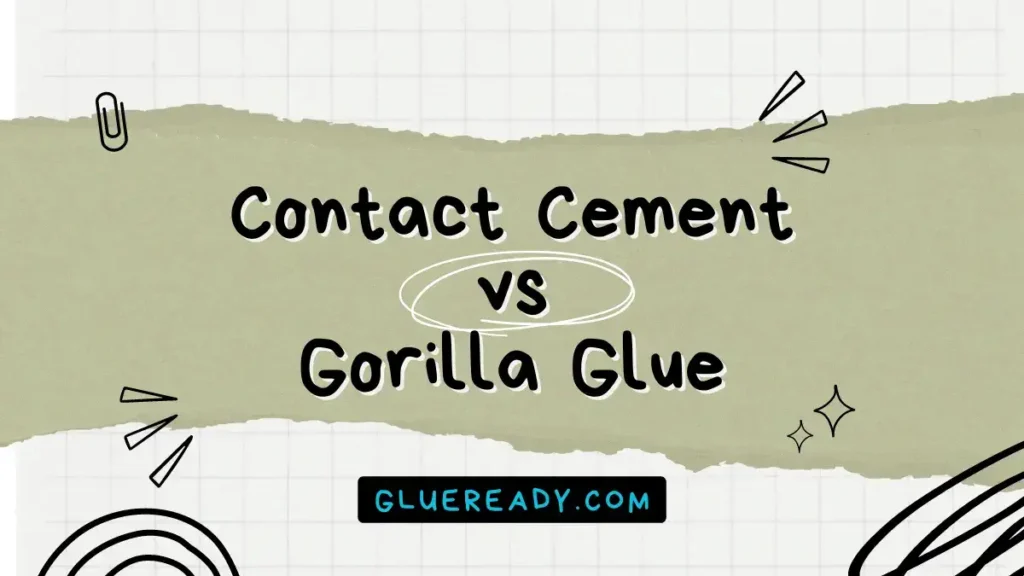Barge Cement vs Rubber Cement

Barge cement and rubber cement are both adhesives, but they have some differences in their composition and usage.
Barge cement is a solvent-based adhesive that gives a flexible but permanent bond, whereas rubber cement is a water-based adhesive that allows bare hands to peel off the bond.
In this article, I will delve into the intricacies of barge cement vs rubber cement, exploring their compositions, applications, strengths, and limitations.
Read More: Barge Cement vs Contact Cement
What Is Barge Cement?
Barge cement is a solvent-based adhesive that contains a neoprene base and is toluene-free.
It is a very strong and versatile glue that can bond a wide range of materials, such as leather, rubber, plastic, metal, wood, glass, and more.

Barge cement is often used for shoe repair, leather work, or other heavy-duty projects that require a permanent and flexible bond.
What Is Rubber Cement?
Rubber cement is a water-based adhesive that consists of elastic polymers, typically latex, mixed with a solvent such as acetone, hexane, or toluene.
The solvent evaporates quickly, leaving behind a flexible and strong bond.

Rubber cement is often used for arts and crafts projects, such as scrapbooking, collage, or paper mache.
It can also be used to patch up small holes in tires or other rubber items.
Barge Cement vs Rubber Cement Comparison Table
| Aspect | Barge Cement | Rubber Cement |
| Type | Solvent-based | Water-based |
| Base | Neoprene | Latex |
| Solvent | Toluene-free | Acetone, hexane, or toluene |
| Bond Type | Flexible but permanent bond | A very flexible bond that can be peeled off by hand |
| Dry Time | Requires a dry time before bonding | Needs moisture to enable it to dry and stick properly |
| Smell and Flammability | Toxic smell and flammable | Toxic smell and flammable |
| Uses | Shoe repair, leather work, heavy-duty projects | Arts and crafts, scrapbooking, paper mache, tire patching |
Differences Between Barge Cement and Rubber Cement
Barge cement and rubber cement are both flexible adhesives that can be used for various craft projects. However, they have different compositions, applications, drying times, and bond strengths.
Composition
Barge cement is a solvent-based adhesive that contains synthetic rubber, resins, and solvents. It has a thick consistency and a strong smell.
Rubber cement is a water-based adhesive that contains natural or synthetic rubber, latex, and water. It has a thin consistency and a mild smell.
Application
Barge cement is applied to one or both surfaces that need to be bonded. It can be spread with a brush, roller, or spatula.
It is suitable for bonding leather, rubber, wood, metal, plastic, and other materials.
Rubber cement is applied to both surfaces that need to be bonded. It can be spread with a brush or applicator.
It is suitable for bonding paper, cardboard, fabric, and other porous materials.

Drying Time and Curing Time
Barge cement has a dry time and a cure time.
Dry time refers to how long it takes for the solvent to evaporate from the adhesive after applying it to the surfaces.
Cure time refers to how long it takes for the adhesive to reach its maximum bond strength after joining the surfaces.
The dry time of barge cement depends on the temperature, humidity, and thickness of the adhesive layer. It can range from 5 to 15 minutes.
The cure time of barge cement depends on the pressure applied to the bond and the type of materials being bonded. It can range from 24 to 72 hours.
Rubber cement has no dry time or cure time. It dries as soon as it is exposed to air.
The bond strength of rubber cement depends on the amount of pressure applied to the bond and the type of materials being bonded.
It can be adjusted by reapplying or removing the adhesive.
Bond Strength
Barge cement gives a very flexible but permanent bond that cannot be easily removed.
It is resistant to water, heat, oil, and chemicals. Applications that require flexibility and durability will benefit from it.
Rubber cement gives a very flexible but temporary bond that can be peeled off with bare hands.
It is not resistant to water, heat, oil, or chemicals. It is ideal for applications that require repositioning or removal of the bond.
Read More: Barge Cement vs Shoe Goo
Frequently Asked Questions (FAQs)
Is Rubber Cement the Same as Super Glue?
No, rubber cement and super glue are not the same. Rubber cement provides a strong, flexible bond, while super glue offers a quick-drying, permanent solution. So, it is not recommended to use super glue as a substitute for rubber cement.
Can You Use Barge Cement on Plastic?
Yes, you can use Barge Cement on plastic. The Barge All-Purpose Rubber Cement is a strong adhesive for use on many materials, including plastic.
Final Thoughts
Both Barge Cement and Rubber Cement are invaluable tools in a craftsman’s or artist’s arsenal, each with its distinct advantages.
Barge Cement boasts exceptional bonding power and rapid drying, making it an ideal choice for permanent bonds in various industries.
On the other hand, Rubber Cement’s repositionable quality and easy removal make it an essential adhesive for artists and designers seeking flexibility and precision in their work.
I hope this comparison between barge cement vs rubber cement has helped you to understand the differences between them.






